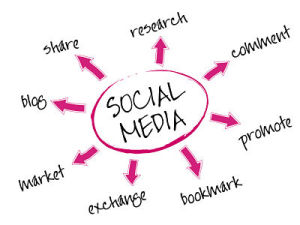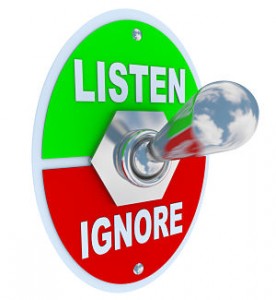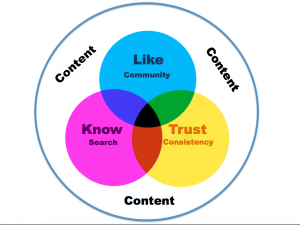Retargeting – Who Do You Have In Your Sights?
August 24, 2016
 I remember the first time I noticed retargeting. I’d been online, checking the park hours before my next trip to Disney World. From that website, I did some work and then went to a CBS sports site to adjust my fantasy football team before the weekend.
I remember the first time I noticed retargeting. I’d been online, checking the park hours before my next trip to Disney World. From that website, I did some work and then went to a CBS sports site to adjust my fantasy football team before the weekend.
As I was trying to decide which running back to play, I noticed a Disney World ad in the side bar. “How weird is that,” I thought, “I was just on the Disney site earlier today. What are the odds?”
Well today – you and I know that the odds are pretty darn high, thanks to retargeting. Only 2% of web visitors convert on their first visit. That means 98% didn’t do what you wanted them to do, be it sign up for a free online class, purchase something or download your free ebook. But thanks to retargeting, you’ll get another shot at them.
Retargeting is a cookie-based technology that uses a simple JavaScript code to anonymously follow your audience all over the Web. You just place an unobtrusive piece of code on your website (this code is sometimes referred to as a pixel). The code is unnoticeable to your site visitors and doesn’t impact your site’s performance.
Each time a new visitor comes to your site, the code drops an anonymous cookie onto their browser. Later, when your cookied visitors browse the Web, the cookie will let your retargeting provider know when to serve ads, ensuring that your ads are only shown to people who have previously visited your site.
Most people know about this kind of retargeting, called site retargeting. But there are other ways to use this technology.
Site retargeting: As I said above, this is when you place a cookie on visitors to your website. But not every visitor is of equal value to you. You can set it so they have to take a certain action or view a certain page before you place the cookie. That way, you know you’re only talking to your best prospects.
Search Retargeting: You are targeting individuals on search engines who have entered a search using key words or phrases that you’ve identified as being relevant to your business. This isn’t as precise as site retargeting so you’ll want to make sure your digital ads don’t assume more interest than there really is.
SEM/SEO retargeting: Think of this as a one-two punch. First, they have to use certain pre-determined search terms and then they have to also visit your site. This gives you a very narrow group of people, so you can be very specific in your creative that is aimed at them.
Email retargeting: This version of retargeting is based on actions that people take after they receive an email from you. Think of all the actions someone could take after they receive your e-newsletter, for example. You could create separate campaigns aimed at people who opened your email, who clicked on a certain link or who forwarded your email along to someone else.
Social retargeting: This type of retargeting gets your prospects earlier in the sales funnel. It is based on interest-based data points that allow you to create audience groups. Think of it as a “birds of a feather flock together” assumptive effort.
I’m hard pressed to think of a business that couldn’t use one or more forms of retargeting as part of their overall marketing strategy. We’re doing some variation of it for almost every one of our clients.
Not only does it allow you to talk to people who are more likely to become first-time buyers, but also it’s very cost effective when managed by professionals who know the ropes. If you haven’t experimented with this, you probably should.
More






 We have to earn our audience’s attention. Let’s see how you’re doing at that.
We have to earn our audience’s attention. Let’s see how you’re doing at that.







